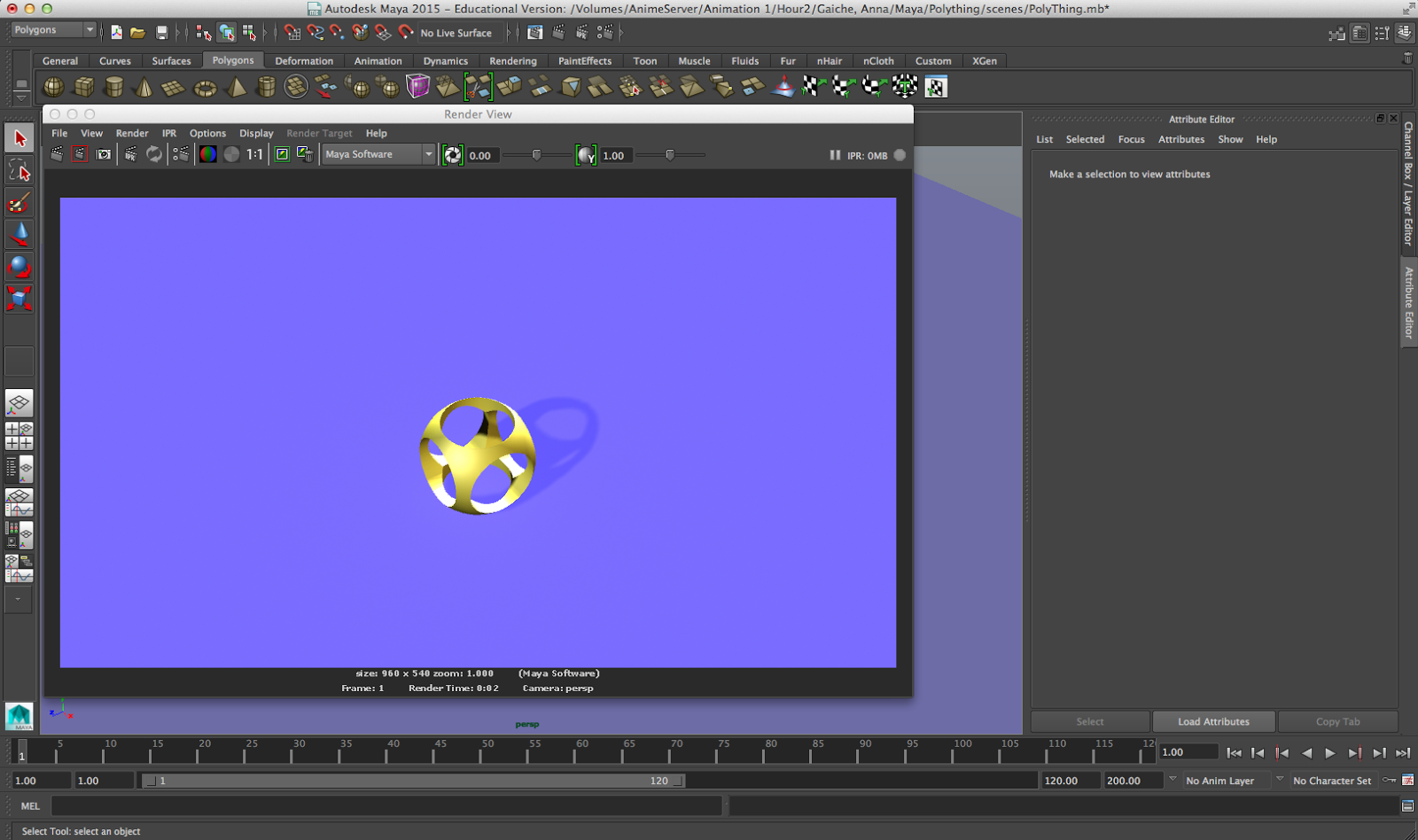The Silver Hammer!
This project was one of the trickiest projects, just because the hammer wasn't just using plain old shapes but it involved a lot of extruding and changing the object into vertex mode to move every little dot and adjust the different shapes. A new tool we learned with this project was a type of extruding that is somewhat helpful.
Process of creating hammer:
 |
| Screenshot of hammer rending in the Maya application. |
As always, I added directional lighting to add shadows to the hammer and nail and to light it up. Then I rendered out the image which showed what the lighting looked like when it was finished rendering.
What I learned:
*Learned how to use the bevel tool more efficiently
*Learned how to create curves in objects using extrude and bevel
*Learned how to add better lighting to objects

























